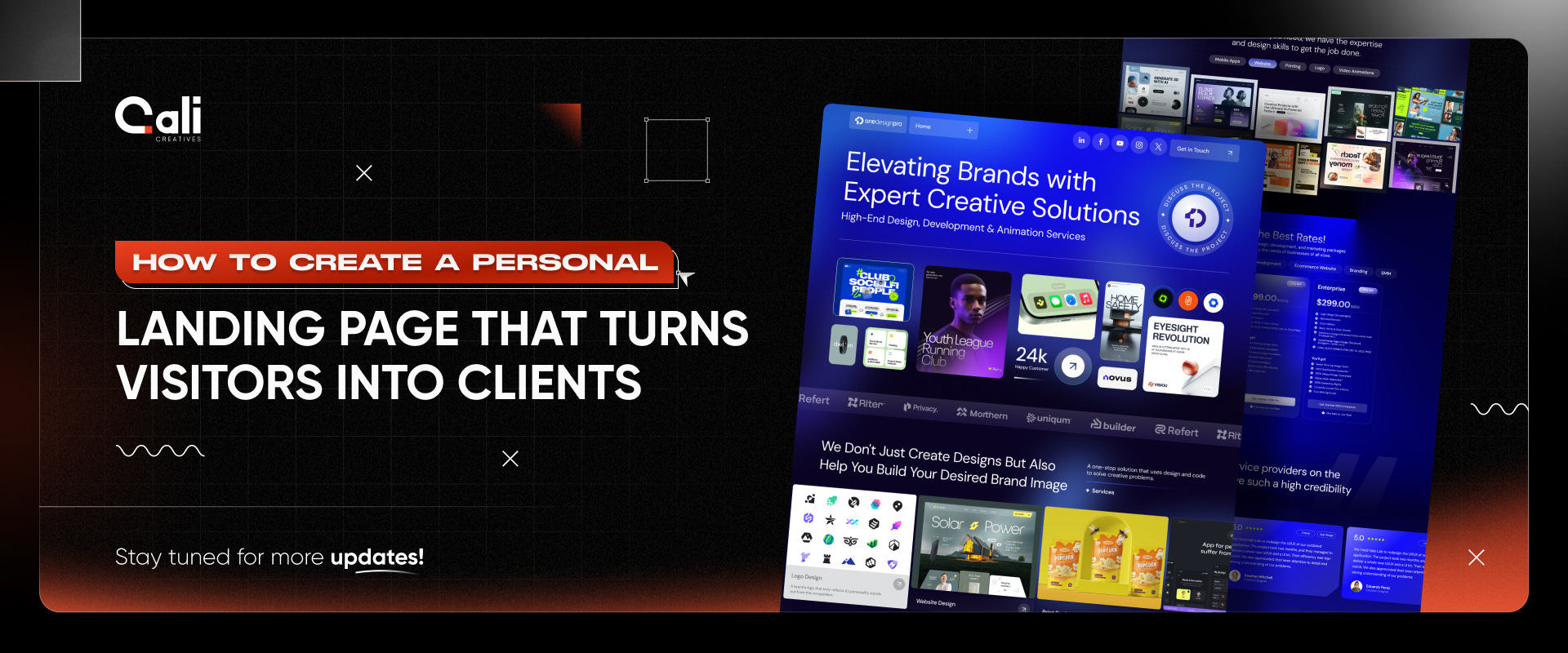
As technology develops and consumer expectations rise, new trends in web design are continually emerging. As we look ahead to 2025, the web design world is set to embrace innovative concepts that prioritise user experience, accessibility, and aesthetics. Here are the top 10 design trends for web design 2025 to inspire your next project.
1. AI-Driven Personalization
AI continues to revolutionise how websites interact with users. By 2025, web design will see the widespread adoption of AI-driven personalisation, offering tailored experiences to visitors based on their behaviour, preferences, and location. Websites will dynamically adjust content, layouts, and recommendations in real-time, making each interaction more relevant and engaging.
Why it Matters: Personalisation boosts engagement and conversion rates by addressing the unique needs of individual users. Designers need to ensure AI integrations are seamless and privacy-conscious.
2. Voice-Activated Interfaces
Voice search and voice-activated interfaces are becoming a staple of modern web experiences. By 2025, websites will be designed with voice navigation in mind, allowing users to interact with content through spoken commands.
Examples in Action:
E-commerce sites enable users to search for products via voice commands.
Voice-driven accessibility tools for visually impaired users.
Design Tip: Incorporate intuitive visual cues that guide users on how to use voice commands effectively.
3. Immersive Scrolling Experiences
Scrolling is no longer just a way to navigate—it has become a storytelling tool. Immersive scrolling, also known as “scroll telling,” will dominate design trends for web design in 2025. Websites will use dynamic scrolling effects, animations, and parallax techniques to create a more engaging narrative flow.
Key Features:
Background animations and transitions.
Triggered events tied to scroll positions.
Horizontal scrolling for unique layouts.
Best Practices: Balance creativity with usability—too many effects can overwhelm users.
4. Augmented Reality (AR) Integration
AR is becoming more accessible, and websites are embracing it to enhance user interactions. By 2025, AR will be used for product visualisations, virtual try-ons, and immersive brand experiences directly within the browser.
Use Cases:
Retail sites offering virtual try-ons for clothing or accessories.
Real estate websites enable users to explore properties in 3D.
Design Challenge: Ensure AR experiences are smooth and optimised for both desktop and mobile devices.
5. Minimalist Neomorphism
Neomorphism, a design trend that blends skeuomorphism and flat design, will continue to evolve into a more minimalist and user-friendly style in 2025. This style creates a tactile, contemporary look with gentle gradients and shadows.
Why It Works: Minimalist neomorphism is visually appealing and aligns with the broader trend of decluttering user interfaces.
Implementation Tips:
Use neomorphism sparingly for buttons, cards, and input fields.
Prioritise readability and accessibility.
6. Dark Mode Refinement
Dark mode has been a popular trend for years, but by 2025, it will be a design standard rather than an optional feature. Websites will not only offer dark mode but also refine it with better colour contrast, dynamic adjustments, and user-controlled settings.
Benefits:
Reduces eye strain for users in low-light environments.
Enhances the visual appeal of content.
Pro Tip: Design for dark mode first, ensuring that all elements look consistent and visually pleasing.
7. Micro-Interactions for Enhanced UX
Micro-interactions—subtle animations or effects triggered by user actions—will play a larger role in design trends for web design 2025. These small details, such as button hover effects or loading animations, improve user engagement and make interfaces feel more interactive.
Examples:
Animated feedback when a form is submitted.
Hover effects that provide additional information.
Design Strategy: Keep micro-interactions subtle and purposeful to avoid overwhelming users.
8. Dynamic and Adaptive Typography
Typography is becoming more dynamic and responsive, adapting to different devices and screen sizes. By 2025, variable fonts and adaptive typography will be a staple of design trends for web design, allowing designers to create fluid text styles that scale perfectly across platforms.
Trends in Typography:
Custom variable fonts for brand consistency.
Kinetic typography with subtle animations.
Design Advice: Test typography across multiple devices to ensure legibility and aesthetic consistency.
9. Sustainable Web Design
As sustainability becomes a global priority, web design will follow suit. Websites in 2025 will focus on reducing their carbon footprint by optimising performance, minimising energy consumption, and choosing eco-friendly hosting solutions.
Sustainable Practices:
Simplified designs that require fewer server resources.
Image and video compression to reduce data usage.
Renewable energy-powered hosting.
Why It’s Important: Sustainability aligns with user values and enhances brand reputation.
10. Inclusive and Accessible Design
Being inclusive is more than just a fad; it is essential. By 2025, web design will prioritise accessibility features that cater to users of all abilities. Inclusive design principles will ensure websites are usable by everyone, regardless of physical or cognitive challenges.
Key Accessibility Features:
Keyboard navigation for all interactive elements.
Screen reader compatibility.
High-contrast themes and adjustable font sizes.
Best Practices: Follow WCAG (Web Content Accessibility Guidelines) to ensure compliance and inclusivity.
Conclusion
The design trends for web design 2025 reflect a balance between innovation, usability, and sustainability. From AI-driven personalisation to immersive scrolling experiences and sustainable practices, these trends will shape the way users interact with websites in the future. By staying ahead of these trends, web designers can create impactful and future-ready digital experiences that not only captivate audiences but also address their evolving needs.
As you implement these trends, remember to prioritise user experience and maintain a consistent brand identity. The future of design trends for web design 2025 is exciting, and embracing these innovations will set your projects apart in a competitive digital landscape.



